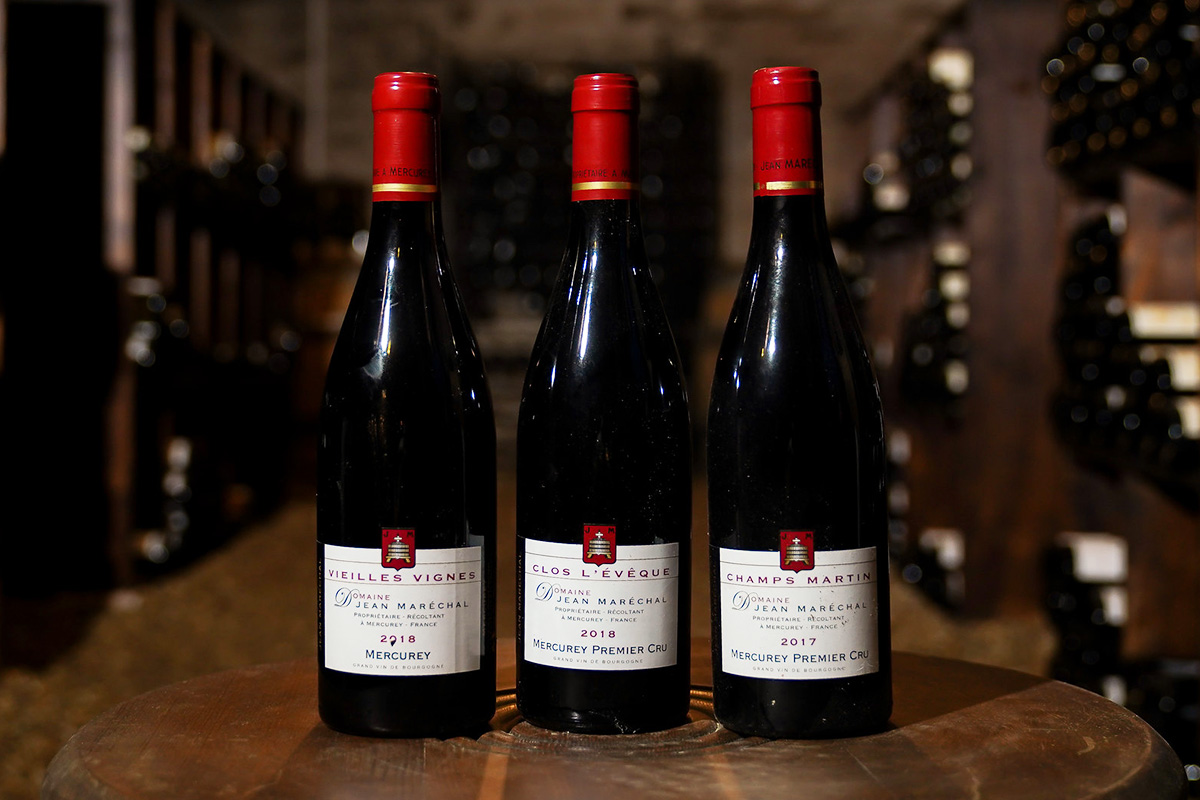Make Your Burgundy Wine. Experience Even More Enjoyable By Learning How To Read A Wine Label
Wine is a complex and fascinating subject that affects us on many levels, both consciously and subconsciously. It’s not just the taste and aroma of the wine that impacts us, but also the visual cues that we receive from the label. When we purchase a bottle of wine, the label is often the first thing that catches our eye. It provides us with information about the wine’s origin, grape variety, producer, and other relevant details. The design of the label, the color of the foil, the font used, and other visual elements all contribute to our subconscious impression of the wine. For instance, a label with an image of a chateau may give the impression of a premium, expensive wine, even if the price is relatively affordable. On the other hand, a label with a simple, elegant design may suggest a high-end vintage and sophistication.
The label of a wine bottle is a powerful marketing tool that can influence our perception of the wine. In this article we explain what how to read a label, some of the most common terms mean, and what the label does (and does not!) tell you about your wine.
In addition to marketing, labels also provide us with crucial information about the wine. For instance, a Burgundy wine label may not show the grape variety, but it will likely display the words “Appellation [location] Controlee”. This system, shortened simply to “AOC”, is designed to guarantee the wine’s origin, and keep on the right side of regulatory guidelines and transparency. Remember; in Burgundy, where the wine was grown and made is given more importance than who made it. It’s therefore essential to understand the different categories of AOC wines when purchasing Burgundy wine.
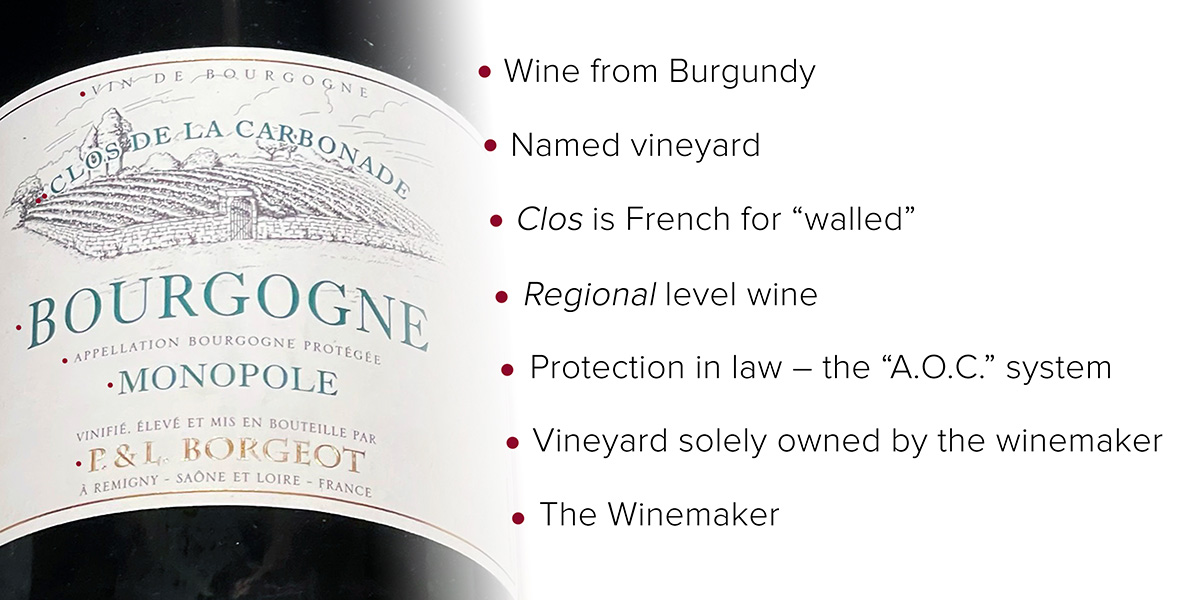
Categories of Burgundy Wine on a Wine Label
Burgundy wines are classified into four categories: from the bottom to the top of the quality range they are regional, village, premier cru, and grand cru. (It might be helpful to think of it like this; when you read a wine label, the more specific it is about location, the more ‘premium’ it is likely to be).
The grand cru AOC wines are the best wines you can get in Burgundy, and they come from vineyards of historical importance. Only the top 2% of Burgundy wines are in this class.
The premier cru AOC wines come next and make up about 10% of total Burgundy production. These wines take their names from the village they are found in, followed by the specific name of the vineyard in which they grew.
Below them are the village AOCs, which make up just over a third of all wine produced in Burgundy. These wines are made solely from the grapes which have originated from one specific, named village or commune.
At the bottom are the regional AOCs, which account for roughly half of all wine in Burgundy.
One thing to keep in mind is that some Burgundy villages have changed their names by adding the name of their most famous vineyard, to sell their village AOC wines. Therefore, it’s crucial to understand the difference between village AOC wines and grand cru AOC wines when you come to read a wine label. When it comes to purchasing Burgundy wines, it’s best to get to know the names of the best producers, especially the smaller, lesser-known ones that offer great value for money.
In conclusion, labels are an essential part of the wine industry, providing us with critical information and influencing our perception of the wine. Understanding the different categories of AOC wines is crucial when purchasing Burgundy wine, and getting to know the best producers can lead to discovering some hidden gems.
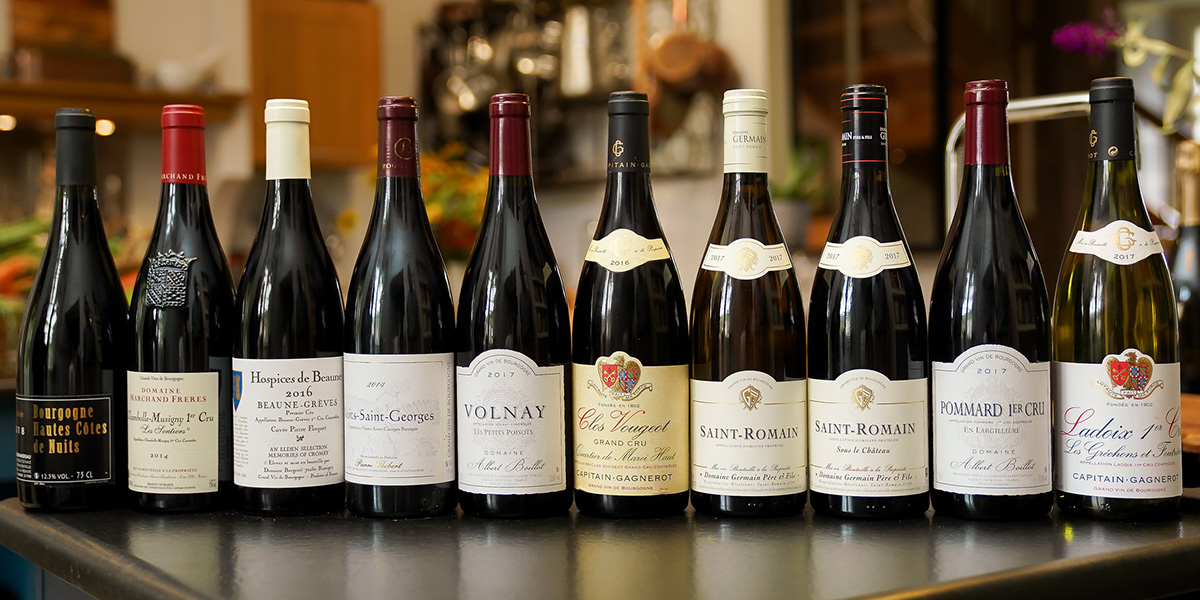
Common Wine Label Terms and What They Mean
- When you read a wine label, you will find important information such as the name of the producer or the merchant who sold the wine — if the name is preceded by “Domaine“, it means that the wine comes from a vineyard or estate. (You will often find on a Burgundy wine bottle label that the name of the producer is in smaller print than other information – that reflects the fact that the place the wine came from is given a lot of weight and importance in this part of the world. That being said, there are signs that more modern winemakers might be starting to trade more on their name than their location).
- The phrase “mis en bouteille” simply indicates where the wine was bottled, for example, “mis en bouteille au Domaine”.
- The word “monopole” refers to a vineyard with a single owner, commonly found in the Côte d’Or region. This is what you will find when you read the wine label of the wine we produce at our home in Burgundy, the Domaine de Cromey (see below for more on our wine).
- A”négociant” is a merchant who produces grapes or finished wines from a vineyard and then bottles them. Wines from a named producer may be more highly regarded, but négociants allow more people to access quality wines at reasonable prices. Négociants originated in the Burgundy region. It’s important to note that not all labels will display the word “vintage”. However, if it is shown, then 100% of the wine in the bottle must be from the vintage described.
- Certain phrases, such as “vieilles vignes” (old vines) and “Grand Vin du Bourgogne” (great Burgundy wine) on a wine label, are unreliable indicators of quality and often do not have any specific meaning at all!
There are no ingredients on a burgundy wine label!
One thing you generally won’t find when you read a Burgundy wine label is a list of ingredients. Of course, the wine contains the juice of the grape used to make it; but there are other things used in the wine industry to filter wines, add flavor or make other chemical reactions occur, such as sulphites. In some countries these are listed, but there is a longstanding debate over what is merely a production aid, and what is an actual ingredient.
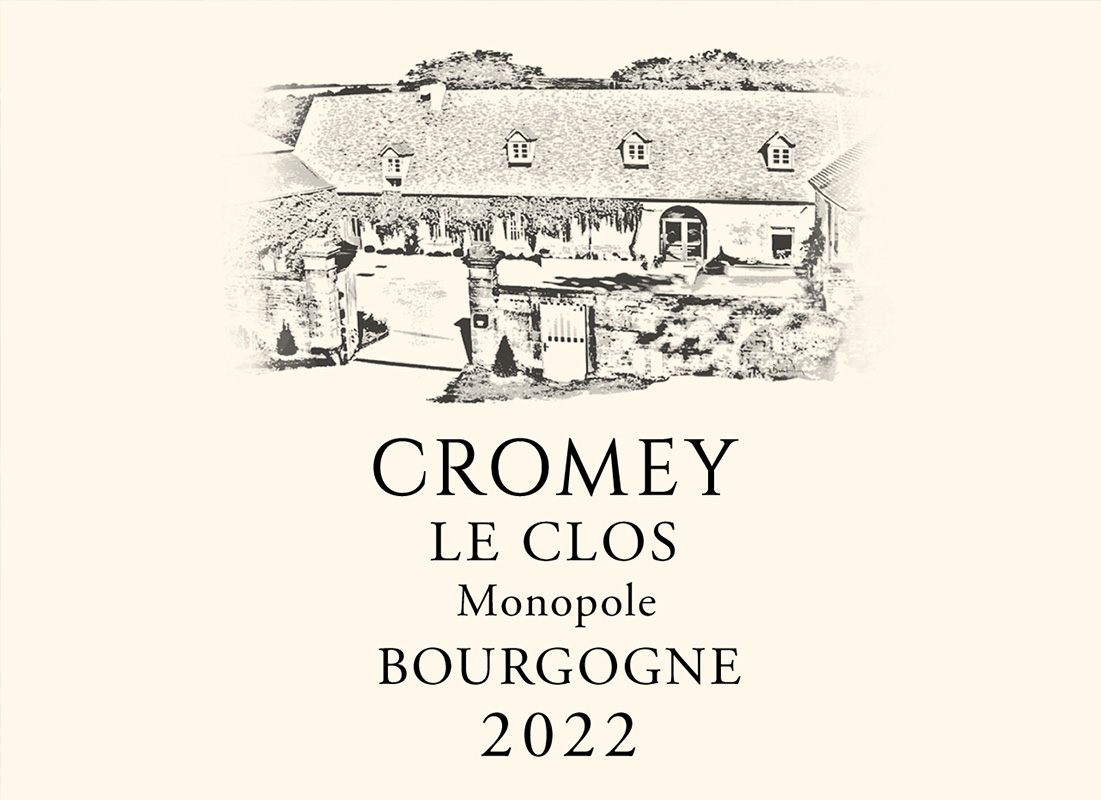
The Vineyard at Domaine de Cromey and Our Wine Label
Our 7-acre vineyard was planted in 2019 with a third of Pinot Noir and twothirds of Chardonnay. However, it takes three years for the vines to mature and produce a small crop, with the first proper yield usually obtained in the fourth year. In 2022, there was enough Chardonnay to produce the first cuvée of Cromey ‘Le Clos’ Bourgogne Blanc Monopole. We are delighted to announce the rebirth of the Domaine de Cromey vineyard and present it on www.burgundywine.com!
The labels we use on our bottles are simple in comparison to some you may find, but they include all the important information a drinker needs to know. We proudly display the name of the wine at the top – Cromey Le Clos and then that it is a monopole wine (from a vineyard with a single owner), Bourgogne (regional level wine) and the year.
So there we have it… just as you should avoid judging a book by its cover, so when you read a wine label, you should see it for what it is – a useful factual indicator, but no substitute for smelling, tasting and feeling your way through the wines of this intriguing wine region.
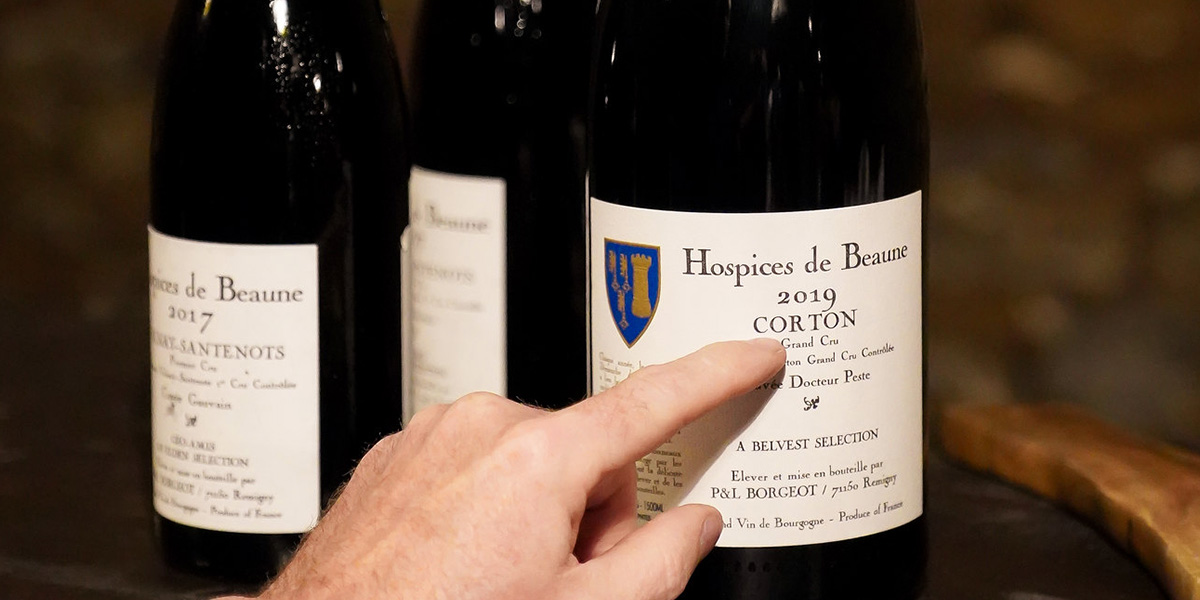
We have lots more blogs about wine vacations and activities on our Domaine de Cromey blog. There are also many articles on our BurgundyWine.com blog including other how to guides, profiles of some of our producers, and much more about the geography and terroir of the Burgundy wine region. Also – we have an exclusive Burgundy Wine Club that we’d love you to be a part of. Follow the link to join up today.

